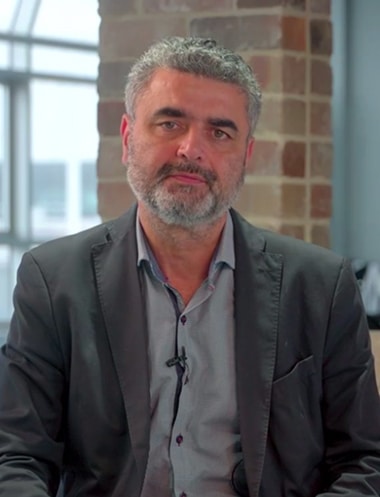

4th Congress of the Balkan Association of Orthodontic Specialists
THE CRUCIAL ROLE OF ORTHODONTICS IN THE MULTIDICIPLINARY TREATMENT OF PAEDIATRIC OSAS
This study followed 3329 children between ages of 7-9 yo, who were referred to me for an orthodontic consultation by their general dentist. The purpose of the study was to see what combination of treatments would most reduce the impact of sleep disordered breathing, in the paediatric population. Based on the signs and symptoms of sleep disordered breathing problems, 3326 patients had the standard orthodontic records of study casts, X-rays/CBCTs, extra oral and intra oral photographs, as well as a baseline sleep study (PSG) or an overnight pulse oximetry. Sleep studies revealed mild to moderate sleep aponea, or other symptoms of SDB. 21 patients PSG studies showed no SDB. The patients were assigned to 1 of 4 treatment groups, plus a control group who did not receive any treatment (group 5): 1) ENT surgery only, or 2) ENT surgery and Myofunctional therapy, with a night time appliance (myobrace) (MFT) or 3) ENT surgery and orthopaedics/orthodontics, and 4) ENT surgery, orthopaedics/orthodontics, MFT and a night-time appliance (myobrace). Sleep studies were performed for all patients, at baseline, and then after ENT intervention, after orthopaedic treatment, and finally after MFT. By comparing the results, the best outcome, for RDI reduction, was obtained when ENT surgery, myofunctional therapy and orthodontic therapy were used. Complete resolution of OSAs, in children, requires appropriate orthodontic treatment, such as maxillary development, maxillary protraction, and mandibular translation.

Dr. Derek Mahony
Dr Derek Mahony is a Sydney (Australia) based Specialist Orthodontist who has spoken to thousands of practitioners about the benefits of interceptive orthodontic treatment. Early in his career Dr Mahony learned from leading clinicians the dramatic effect functional appliance therapy can afford patients in orthodontic treatment. He has been combining the fixed and functional appliance approach ever since. His lectures are based on the positive impact such a combined treatment approach has had on his orthodontic results and the benefits this philosophy provides from a practice management viewpoint.
After completing his Dental Degree at the University of Sydney Dr Mahony proceeded to the United Kingdom where he completed his Masters Degree in Orthodontics at the Eastman Dental Hospital, Institute of Dental Surgery, London.
Further studies led to the successful completion of a Diploma in Orthodontics at the Royal College of Surgeons, Edinburgh. Dr. Mahony has also passed the Royal College of Dentists in Canada post graduate examination in the field of orthodontics.
Dr Mahony has passed examination leading to a postgraduate qualification in Dentofacial Orthopaedics from the Royal College of Physicians and Surgeons in Glasgow. He has also attained his Membership in Orthodontics qualification from the Royal College of Surgeons, England.
Dr Mahony has been seeing an average of 250 patients per week for the last decade and has gained a vast amount of experience which he can pass on to clinicians so that they can come to appreciate the key elements of his combined treatment approach. He currently has over 3000 orthodontic patients in active treatment and has been a key note speaker at the International Orthodontic Summit meetings, the International Association of Orthodontics meetings, and the American Association of Functional Orthodontics meetings. He is considered by some to be the "next leading lecturer on functional/fixed orthodontics."
Dr Mahony approaches his orthodontic diagnosis from a "facial profile" point of view. He sets his treatment goals to create not just straight teeth, but beautiful faces and healthy temporomandibular joints.
Dr Mahony is contributing editor to the Journal of Clinical Paediatric Dentistry, International Orthodontic Journal and Spanish Journal of Dentofacial Orthopaedics.
back to 4th Congress of the Balkan Association of Orthodontic Specialists